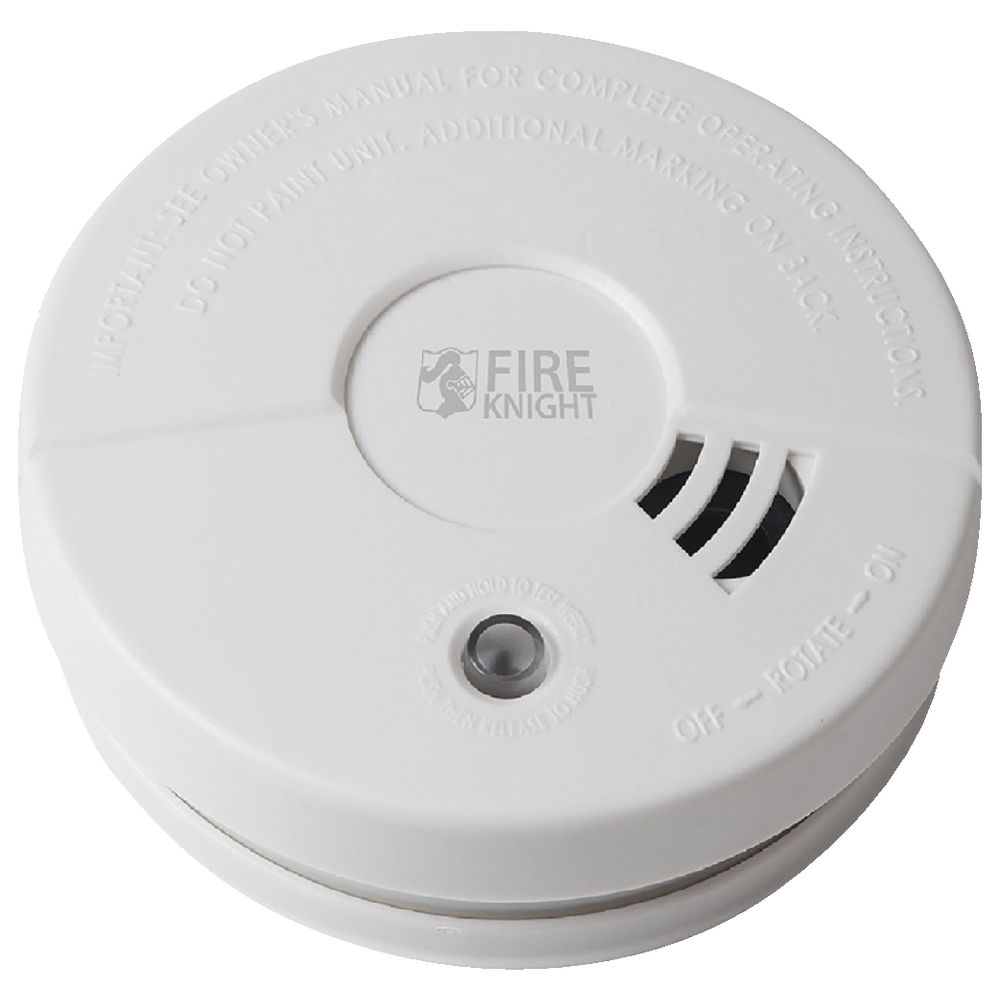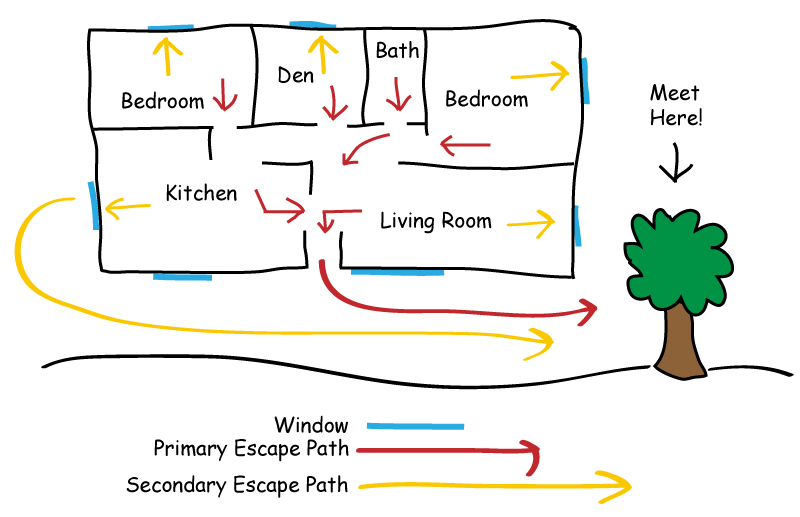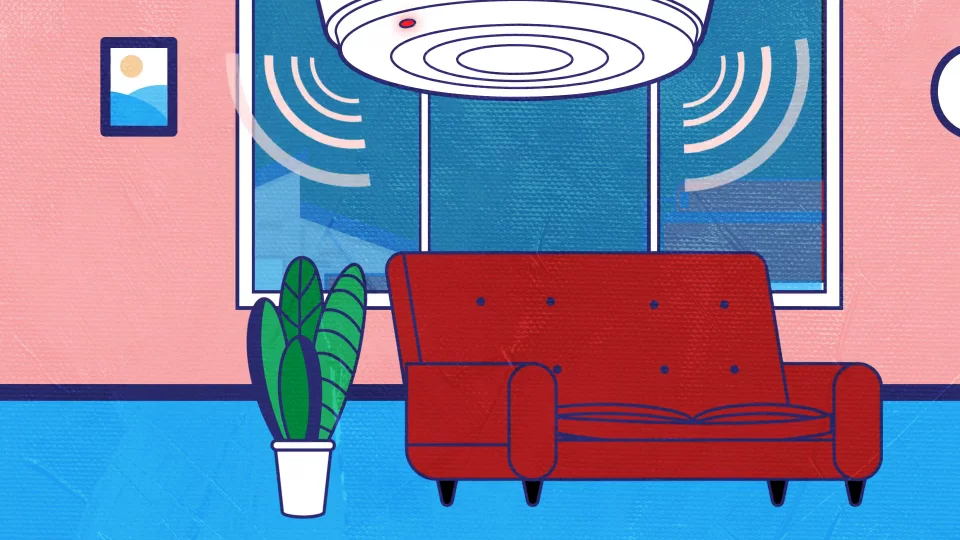Smoke detectors are one of the most important safety devices in your home. They are designed to detect smoke and alert you to potential danger, allowing you and your family to evacuate safely in the event of a fire. In this blog post, we’ll discuss why it’s important to have working smoke alarms in your home, the Australian smoke detector standards and the two types available: photoelectric and ionisation. We’ll also discuss the importance of having a family emergency evacuation plan.

What is a smoke alarm or detector?
A smoke alarm or smoke detector is a device that is designed to detect the presence of smoke in the air. When it detects smoke, it emits a loud and distinct sound, alerting people in the vicinity of the potential fire. Smoke alarms are a critical safety device, as they provide an early warning system that can give people time to evacuate a building or call for emergency services. There are two main types of smoke detectors: photoelectric and ionization. Both types are effective at detecting smoke from fires, but they work in different ways and are best suited for different types of fires. It is important to have working smoke detectors installed in your home or workplace to ensure the safety of everyone inside.

Australian standards regarding smoke detector installation
In Australia, smoke detectors are required by law to be installed in all homes. According to the Queensland Building and Construction Commission (QBCC), smoke detectors must be installed on each level of your home and in every bedroom. They must also be interconnected, so if one alarm goes off, they all go off.
The QBCC also states that smoke detectors must comply with Australian Standards (AS) 3786-2014. This standard sets out the minimum requirements for smoke alarm installation, including the type of alarm, its location, and how it should be interconnected. From 1 January 2022, landlords must install interconnected smoke alarms in residential rental properties. Similar rules apply to owner occupiers. All other dwellings must transition to full compliance by 2027.
Interconnected photoelectric smoke alarms must be installed in every bedroom, in hallways and on every level. When one goes off, they all go off, giving everyone extra time to escape.
Existing smoke alarms manufactured more than 10 years ago, and any smoke alarms that do not operate when tested must be replaced with photoelectric smoke alarms that comply with Australian Standard 3786–2014.

Photoelectric smoke detectors
There are two types of smoke detectors: photoelectric and ionisation. Photoelectric smoke detectors are designed to detect slow-burning fires, which are the most common type of house fires. They use a beam of light to detect smoke particles, and when smoke enters the detector, it scatters the light beam, triggering the alarm.
Photoelectric smoke detectors are particularly effective at detecting smoke from smouldering fires, which produce a lot of smoke but not a lot of heat. This makes them a popular choice for bedrooms, as they are less likely to be triggered by cooking fumes or steam from bathrooms.
Interconnected photoelectric smoke alarms are required under the new QLD smoke alarm laws.

Ionisation smoke detectors
Ionisation smoke detectors are designed to detect fast-burning fires, which are less common in home settings than slow-burning fires. They work by ionising the air inside the detector, which creates a small electric current. When smoke enters the detector, it interrupts the current, triggering the alarm.
Ionisation smoke detectors are particularly effective at detecting smoke from fires that burn quickly and produce a lot of heat, such as kitchen fires. However, they are less effective at detecting smouldering fires, which can produce a lot of smoke but not a lot of heat.

Have a family emergency evacuation plan
In addition to having working smoke detectors, it’s important to have a family emergency evacuation plan. This plan should include a designated meeting place outside your home, so you can ensure everyone is accounted for in the event of a fire. It’s also important to practice your evacuation plan regularly, so everyone knows what to do in case of an emergency.

Contact Sparc Electrical
In conclusion, having working smoke detectors is essential for keeping you and your family safe in the event of a fire. It’s important to ensure your smoke detectors comply with Australian Standards and are installed in the correct locations. Photoelectric smoke detectors are the most effective at detecting slow-burning fires, while ionisation smoke detectors are best at detecting fast-burning fires. The former is now required in all homes. Finally, having a family emergency evacuation plan is critical in ensuring everyone knows what to do in case of an emergency.
Don’t wait until it’s too late to ensure your home is equipped with legally compliant smoke alarms. Sparc Electrical offers professional smoke alarm installation services to help keep you and your family safe. Our licensed and insured Master Electricians are available 24/7 for emergency services across north Brisbane and the Sunshine Coast.
Contact us today on 0404 213 806 or email info@sparc-electrical.com.au to schedule your smoke alarm installation service and ensure your home and family are safe. Don’t take chances with your loved ones – trust SPARC Electrical to provide you with the highest quality service and peace of mind.


 Your Local Reliable Electrician That You Can Trust
Your Local Reliable Electrician That You Can Trust 